Modernist Cuisine is a six-volume, 2,438-page set that is destined to reinvent cooking. And it may. The reviews have been glowing.
Sam Sifton of the New York Times writes today that Modernist Cuisine “is the first modern cookbook to range into the territory of the Larousse Gastronomique, a heretofore unparalleled culinary reference book first published in 1938, and of Escoffier’s expansive Guide Culinaire, from 1903. It is larger and more far lavishly illustrated than either, with photographs that 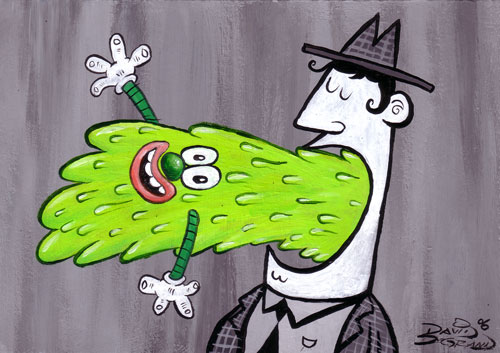 make both deep-frying and the extrusion of gel noodles appear to be miracles on the order of Caravaggio.”
make both deep-frying and the extrusion of gel noodles appear to be miracles on the order of Caravaggio.”
One of the authors got the Colbert bump last night (see video below).
I’m all for science and cooking, although I wonder what the authors would have to say about science used to bolster the quality and supply of ingredients – genetically engineered foods, growth promotants, pesticides and others.
I don’t know because I haven’t read the book, but I have read a piece the three authors — Nathan Myhrvold, a former chief technology officer at Microsoft and CEO of Intellectual Ventures, Chris Young, who opened the experimental kitchen at The Fat Duck, and Maxime Bilet, who was head chef at Jack’s Luxury Oyster Bar and then on the development team with Heston Blumenthal at The Fat Duck – penned for Scientific American chastising U.S. regulators for babying consumers and recommending cooking temperatures and times far beyond those supported by science.
The Scientific American blog post is best characterized by selective referencing and incomplete claims – the playbook for rhetorical argumentation.
The authors say that “during a recent outbreak of Escherichia coli linked to contaminated fresh spinach in the United States (is 2006 recent?), public health authorities initially told consumers, retailers, and restaurants to throw out all spinach, often directly stating in public announcements that it could not be made safe by cooking it.
“This assertion is scientifically incorrect: E. coli is very easy to kill with heat.
Evidently the officials decided that oversimplifying the public message was better than telling the truth. They may have feared that if people cooked contaminated spinach to make it safe to eat, but either didn’t cook it sufficiently or cross-contaminated other food or kitchen surfaces in the process, more fatalities would result. The authorities must have decided that the benefits of avoiding multiple accidental deaths far outweighed the 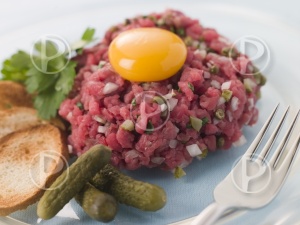 costs of simply tossing out all spinach. In this case they probably were right to make that decision. The cost of some spinach is small compared to the misery and expense of hospitalization.”
costs of simply tossing out all spinach. In this case they probably were right to make that decision. The cost of some spinach is small compared to the misery and expense of hospitalization.”
“Oversimplifying for the sake of public safety is a very reasonable thing to do in the midst of an outbreak or other health crisis. It may well have saved lives to lie to the public and announce things that, strictly speaking, are false (for example, that you can’t kill E. coli with heat).”
This is nonsensical. Cross-contamination while preparing the spinach was the primary concern and is by far the biggest risk in home and food service kitchens. We and others have done the research.
The authors ask, “Who pushes back against nonsensical rules? The reality is that the only groups that push back are those that have political clout.”
Blame the man.
Myself and others have been promoting an evidence-based approach to food safety guidelines for decades, and as food safety nerds, we got no political clout.
The authors say that “millions of servings of rare beef steak or completely raw steak tartare or carpaccio are served every day, so if that meat were inherently dangerous, we’d certainly know by now. Scientific investigation has confirmed the practice is reasonably safe—almost invariably, muscle interiors are sterile and pathogen-free. That’s true for any meat, actually, but only beef is singled out by the FDA. The cultural significance of eating raw and rare beef, as much as the science, accounts for the FDA’s leniency in allowing beef steak to be served at any internal temperature.”
There is a huge microbiological difference between a muscle cut that can be seared on the outside, and hamburger or any beef cut that is ground up so external pathogens are internalized. It’s not culture – it’s microbiology.
“Cultural and political factors also explain why cheese made from raw milk is considered safe in France yet viewed with great skepticism in the United States. Traditional cheese-making techniques, used correctly and with 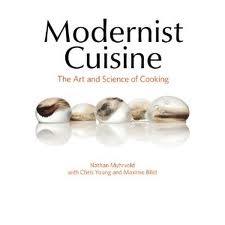 proper quality controls, eliminate pathogens without the need for milk pasteurization. Millions of people safely consume raw milk cheese in France, and any call to ban such a fundamental part of French culture would meet with enormous resistance there.”
proper quality controls, eliminate pathogens without the need for milk pasteurization. Millions of people safely consume raw milk cheese in France, and any call to ban such a fundamental part of French culture would meet with enormous resistance there.”
That’s the stereotype, but when Amy and I were in France in 2007, two of France’s (and thus the world’s) top lait cru Camembert producers, Lactalis and Isigny-Sainte-Mère, announced they were forgoing the status of “Appellation d’Origine Contrôlée” and switching to cheese made exclusively with heat-treated micro-filtered milk (not quite pasteurized but still an affront to purists).
Lactilis’ spokesperson, Luc Morelon said that although they recognize the importance of Camembert traditions, they’re making the change “[b]ecause consumer safety is paramount, and we cannot guarantee it 100 per cent. We cannot accept the risk of seeing our historic brands disappearing because of an accident in production." In response to his critics Morelon added, “I don’t want to risk sending any more children to hospital. It’s as simple as that." Others believe that Lactilis simply cannot produce the quantities they want and keep using raw milk. According to the Telegraph, Lactilis’ and Isigny’s decision to opt out has now put pressure on the AOC to accept pasteurized milk. It all boils down to business.
Sure, blame the man.
“The United States, however, lacks a broadly recognized culture of making or eating raw milk cheeses. Not coincidentally, health officials have imposed inconsistent regulations on such cheeses. Raw milk cheese aged less than 60 days cannot be imported into the United States and cannot legally cross U.S. state lines. Yet in 24 of the 50 states, it is perfectly legal to make, sell, and consume raw milk cheeses within the state. In most of Canada raw milk cheese is banned, but in the province of Quebec it is legal.”
Do you know how many people got sick and how many miscarriaged due to listeria in raw milk cheese in Quebec in 2008? The 60-day rule is scientifically dumb; that’s why it’s being reviewed.
“Technically, destruction of Salmonella can take place at temperatures as low as 48 degrees C / 120 degrees F given enough time. There is no scientific reason to prefer any one point on the reduction curve, but the experts who formulated the FSIS ready-to-eat standards arbitrarily decided to go no lower than 58 degrees C / 136 degrees F .”
Yes, you’ve got the time-temperature thing down — food safety 101. But us mere mortals don’t necessarily have endless hours to cook chicken. Or pastrami (see below).
As a sidenote, two of the authors worked at The Fat Duck, which sickened 529 diners with norovirus, not just via the raw oysters they served, but by failing to report cases of sick people to public health types, poor record keeping, and allowing sick employees to continue working.
Modernist Cuisine may be an awesome science-based cookbook, and I agree that rules need to be continually challenged; it’s also important to get it microbiologically correct.
 I have those childhood memories: being on the couch for a couple of days, watching bad game shows and barfing endlessly, much like the 529 diners and staff who were sickened by norovirus at the Fat Duck in 2009.
I have those childhood memories: being on the couch for a couple of days, watching bad game shows and barfing endlessly, much like the 529 diners and staff who were sickened by norovirus at the Fat Duck in 2009.
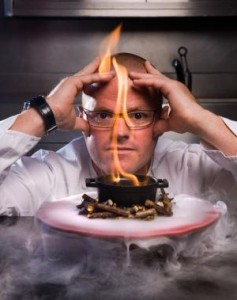
.jpg) point that
point that .jpg)

 Guardian:
Guardian:.jpg) but-we-have-a-manual defense, which is nothing more than an invitation for more derision.
but-we-have-a-manual defense, which is nothing more than an invitation for more derision.(2).jpg) illness had been received by the restaurant, although no one had contacted the health department (because most people don’t know to contact the health department in suspected foodborne illness cases).
illness had been received by the restaurant, although no one had contacted the health department (because most people don’t know to contact the health department in suspected foodborne illness cases). make both deep-frying and the extrusion of gel noodles appear to be miracles on the order of Caravaggio.”
make both deep-frying and the extrusion of gel noodles appear to be miracles on the order of Caravaggio.” costs of simply tossing out all spinach. In this case they probably were right to make that decision. The cost of some spinach is small compared to the misery and expense of hospitalization.”
costs of simply tossing out all spinach. In this case they probably were right to make that decision. The cost of some spinach is small compared to the misery and expense of hospitalization.” proper quality controls, eliminate pathogens without the need for milk pasteurization. Millions of people safely consume raw milk cheese in France, and any call to ban such a fundamental part of French culture would meet with enormous resistance there.”
proper quality controls, eliminate pathogens without the need for milk pasteurization. Millions of people safely consume raw milk cheese in France, and any call to ban such a fundamental part of French culture would meet with enormous resistance there.”(1).jpg) “Heston Blumenthal is one of the most forward-thinking chefs in the world.”
“Heston Blumenthal is one of the most forward-thinking chefs in the world.”.jpg) Careful with that raw shellfish.
Careful with that raw shellfish..jpg) Australian chef Neil Perry has enticed close friends Heston Blumenthal, the British star of TV cooking show Heston’s Feast, and American Thomas Keller, the creator of The French Laundry restaurant in California, to create a six-course degustation dinner on March 26 next year.
Australian chef Neil Perry has enticed close friends Heston Blumenthal, the British star of TV cooking show Heston’s Feast, and American Thomas Keller, the creator of The French Laundry restaurant in California, to create a six-course degustation dinner on March 26 next year..jpg) restaurant. Heston has a memory of convenience in yet another quest for salvation and, sympathy while pushing a new fancy restaurant and cookbook. Here’s a reminder.
restaurant. Heston has a memory of convenience in yet another quest for salvation and, sympathy while pushing a new fancy restaurant and cookbook. Here’s a reminder.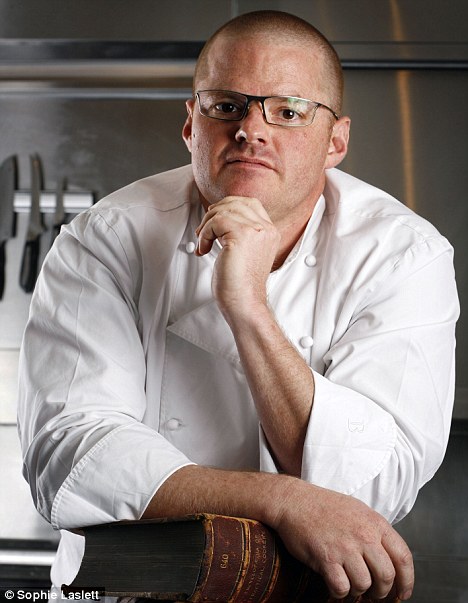 suffered. My instincts were to contact everyone personally and apologise but I was advised against this by my lawyers, insurers and official bodies conducting investigations. It was extremely frustrating, but my hands were tied.”
suffered. My instincts were to contact everyone personally and apologise but I was advised against this by my lawyers, insurers and official bodies conducting investigations. It was extremely frustrating, but my hands were tied.”.jpeg) Blumenthal is now gearing up for the opening of a lavish new restaurant, Dinner, at London’s Mandarin Oriental Hotel in December. He is also working on a new, simpler cookbook, Heston At Home, which will be out in a year’s time.
Blumenthal is now gearing up for the opening of a lavish new restaurant, Dinner, at London’s Mandarin Oriental Hotel in December. He is also working on a new, simpler cookbook, Heston At Home, which will be out in a year’s time. “… believe it or not, watching half a dozen B-grade British celebrities get slowly shickered as plate upon plate of outlandish meals is piled before them and they try to describe the experience in their own words is classic, thesaurus-less, comedy gold. When they’re gobsmacked, they admit it. ‘I’m gobsmacked.’” Similarly, if they’re amazed, they’ll get straight to the point. ‘’That’s amazing!’ an amazed TV presenter screeches, before adding: ‘I’m totally amazed!’
“… believe it or not, watching half a dozen B-grade British celebrities get slowly shickered as plate upon plate of outlandish meals is piled before them and they try to describe the experience in their own words is classic, thesaurus-less, comedy gold. When they’re gobsmacked, they admit it. ‘I’m gobsmacked.’” Similarly, if they’re amazed, they’ll get straight to the point. ‘’That’s amazing!’ an amazed TV presenter screeches, before adding: ‘I’m totally amazed!’